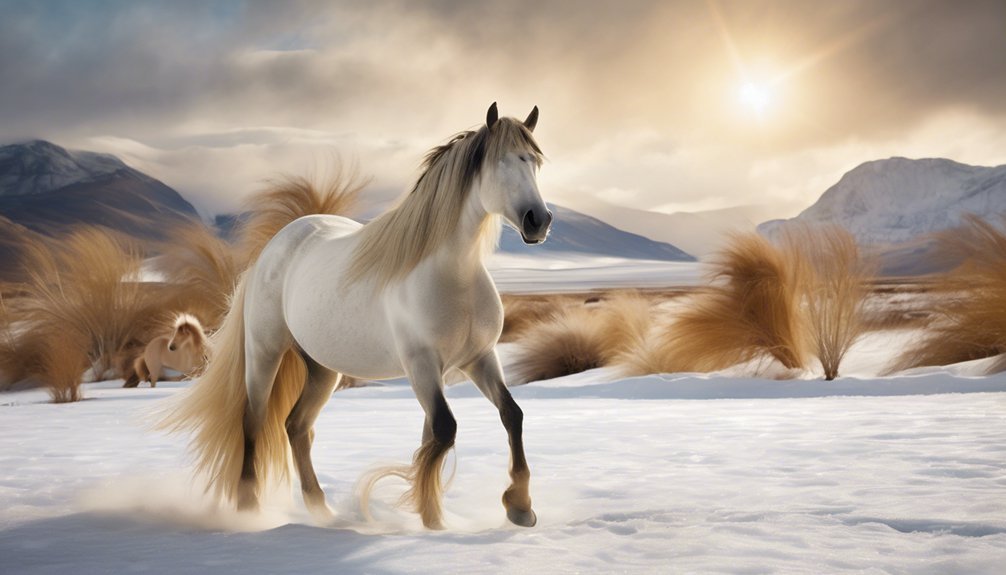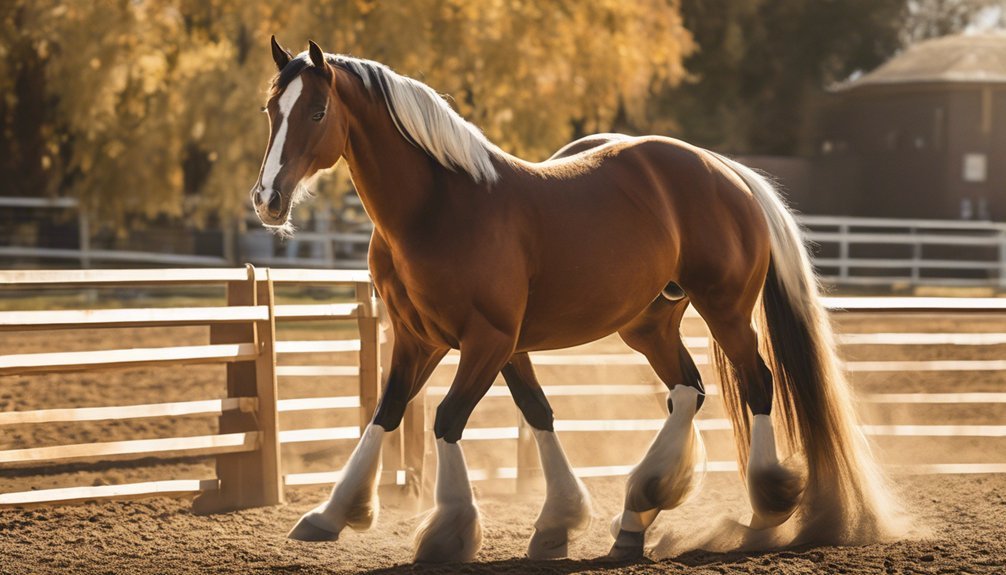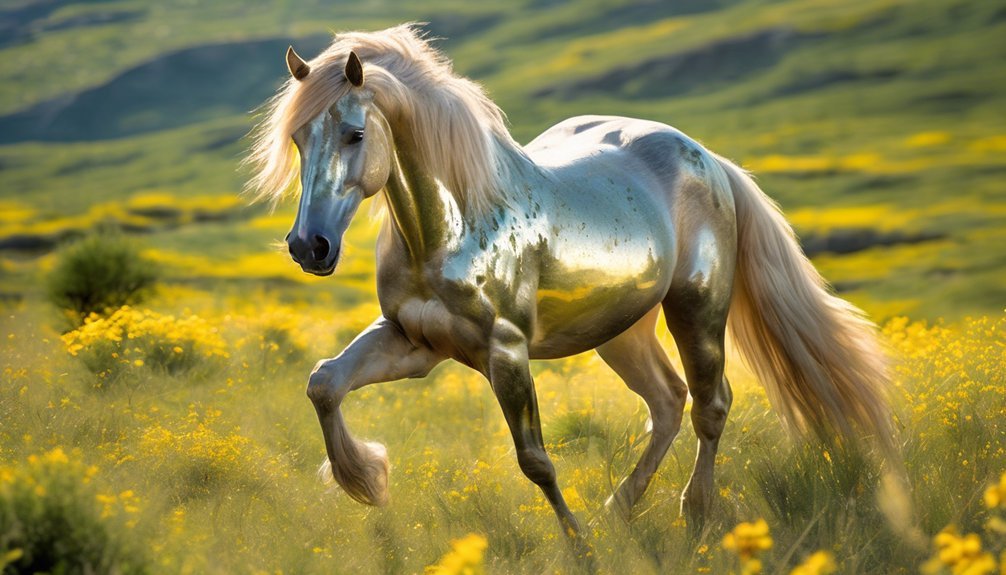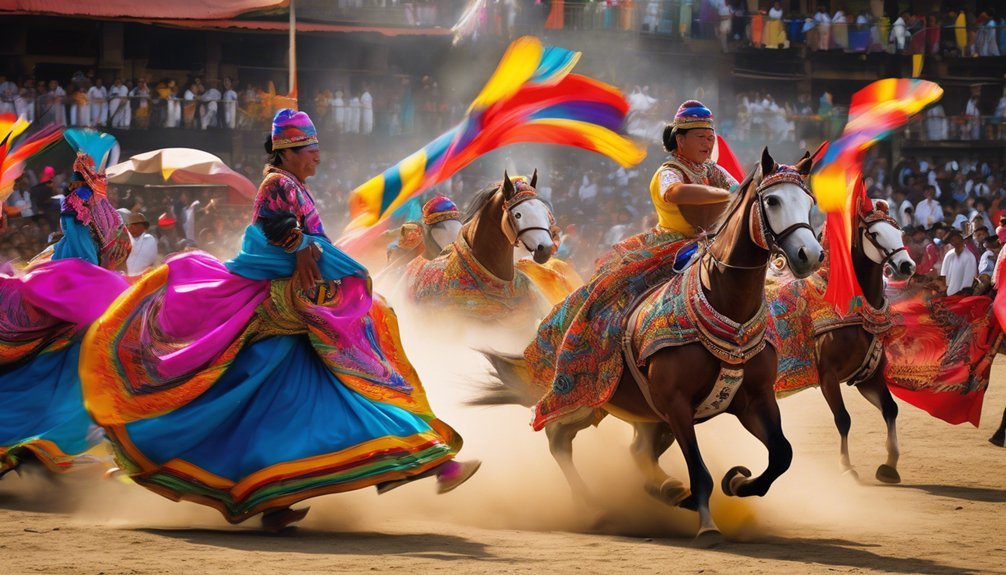
Have you ever considered how climate shapes the very essence of horse breeds? Each breed has evolved unique traits to survive and thrive in its native environment. Northern breeds, with their dense coats, contrast sharply with southern breeds that rely on sweat for cooling. Understanding these adaptations is crucial for effective management, especially as weather patterns shift. What does this mean for the future of horse care across diverse climates?
Key Takeaways
- Northern horse breeds have adaptations like thick coats and sturdy builds for insulation and snow navigation in cold climates.
- Southern horse breeds possess shorter coats and efficient cooling mechanisms to handle heat and humidity.
- Seasonal changes impact horse behavior, health, and performance, requiring tailored care routines for different climates.
- Coat thickness and body composition play crucial roles in temperature regulation, affecting comfort and health across breeds.
- Proper hydration and nutrition strategies are vital, with different requirements for hot versus cold climates to maintain performance.
The Impact of Cold Climates on Northern Horse Breeds

As temperatures drop in northern regions, horse breeds that thrive in these cold climates have developed unique adaptations to survive and perform well.
These breeds exhibit exceptional cold tolerance, thanks to their thick coats, which provide insulation against frigid temperatures. You'll notice their sturdy build and compact bodies, characteristics essential for maintaining body heat.
Breeds like the Clydesdale and Fjord showcase powerful musculature, enabling them to navigate snowy terrain with ease. Additionally, their larger hooves help distribute weight, preventing them from sinking into soft snow.
Their metabolic processes are also adapted, allowing them to efficiently utilize energy from forage.
Understanding these breed characteristics not only highlights their resilience but also deepens your appreciation for these magnificent animals in harsh climates.
Adaptations of Southern Horse Breeds to Heat and Humidity
While northern horse breeds excel in cold climates, southern breeds have developed their own set of adaptations to thrive in heat and humidity.
These horses possess remarkable heat tolerance; their bodies have evolved to dissipate heat efficiently through increased blood flow to the skin and a higher density of sweat glands.
Additionally, southern breeds often feature shorter coats that allow for better airflow, enhancing their humidity adaptation.
They also exhibit a more efficient respiratory rate, which aids in thermoregulation during hot weather.
Furthermore, their behavior reflects a natural instinct to seek shade and conserve energy during peak heat hours.
Seasonal Changes and Their Effects on All Breeds
Seasonal changes significantly impact all horse breeds, influencing their behavior, health, and overall performance. As temperatures fluctuate, horses exhibit seasonal adaptations that may affect their energy levels and temperament.
For instance, during colder months, you might notice your horse becoming more reserved or requiring additional calories to maintain body heat. This calls for thoughtful breeding considerations; selecting horses that thrive in specific climates can enhance performance and well-being.
Furthermore, as daylight changes, it can affect hormone levels, influencing breeding cycles. By understanding these seasonal dynamics, you can better tailor care routines, feeding, and management practices to ensure your horse remains healthy and performs at its best, regardless of the season.
The Role of Coat and Body Composition in Temperature Regulation

Horses rely heavily on their coat and body composition to regulate temperature effectively, particularly in varying climates.
The thickness of a horse's coat plays a crucial role in insulation, providing warmth during cold weather and protection from the sun in hot conditions. A thicker coat traps air close to the skin, creating a barrier against external temperatures.
Conversely, a thinner coat allows for better heat dissipation in warmer climates. Body composition, including fat distribution, also contributes to overall insulation. Horses with a higher fat percentage tend to retain heat better, aiding in temperature regulation.
Understanding these factors helps you ensure your horse remains comfortable and healthy, regardless of the climate they're exposed to, allowing for optimal performance and well-being.
Hydration and Nutrition Considerations for Different Climates
As temperatures fluctuate, understanding hydration and nutrition becomes essential for maintaining a horse's health and performance.
In hot climates, focus on effective hydration strategies, such as offering electrolyte solutions to replenish lost minerals. Ensure fresh water is always available, as dehydration can lead to serious health issues.
In contrast, colder climates may require you to adjust your horse's diet to include more energy-dense feeds that support body heat production. Nutritional supplements, including vitamins and minerals, can help address specific deficiencies caused by seasonal dietary changes.
Tailoring your horse's hydration and nutrition according to climate not only supports their well-being but also enhances their performance, allowing them to thrive in any environment you encounter together.
Managing Health Risks Associated With Extreme Weather
While extreme weather can pose significant health risks to equines, proactive management strategies can mitigate these dangers. You should monitor weather forecasts closely and prepare your horse's environment accordingly. For instance, ensure proper shelter during storms and provide adequate ventilation in extreme heat.
| Health Risks | Management Strategies | Suggested Actions |
|---|---|---|
| Dehydration | Ensure constant water supply | Check water daily |
| Heat Stress | Provide shade and hydration | Schedule rides early/late |
| Respiratory Issues | Maintain clean, dry bedding | Regularly clean stalls |
| Laminitis | Monitor grazing conditions | Limit pasture access |
Training and Performance Adjustments Based on Climate Conditions

When training horses, temperature and humidity play critical roles in their performance.
You'll need to adjust your training schedule and methods based on these climate factors to ensure optimal results.
Understanding how heat and moisture influence your horse's endurance and stamina is essential for effective training.
Temperature Impact on Training
Training performance in horses is significantly influenced by temperature, requiring thoughtful adjustments to optimize outcomes.
To ensure your training schedules align with temperature variations, consider the following:
- Adjust Intensity: On hotter days, reduce the intensity of workouts to prevent overheating and stress.
- Alter Timing: Schedule training sessions during cooler parts of the day, such as early morning or late evening, to maximize performance.
- Incorporate Temperature Acclimation: Gradually expose your horse to higher temperatures, allowing time for them to adapt before increasing the workload.
Humidity and Performance Adaptations
Humidity significantly affects a horse's ability to perform, necessitating strategic adjustments to training routines. High humidity can lead to increased fatigue and decreased performance, impacting your horse's stamina and focus. To optimize performance, you'll need to implement specific adaptations, such as modifying training times and hydration strategies.
| Adaptation Type | Description |
|---|---|
| Training Schedule | Shift sessions to cooler times of day |
| Hydration Protocol | Increase water intake before and after workouts |
| Conditioning Focus | Incorporate shorter, intense sessions |
| Rest and Recovery | Allow for longer recovery periods |
Frequently Asked Questions
How Does Climate Impact Horse Behavior and Temperament?
Climate impacts horse behavior and temperament significantly. You'll notice temperature sensitivity leading to behavioral changes; for instance, extreme heat can cause restlessness, while cold may trigger lethargy. Adjusting conditions helps ensure your horse maintains optimal well-being.
Are Certain Breeds More Prone to Climate-Related Health Issues?
Just like a delicate flower, certain horse breeds reveal vulnerabilities. Breed susceptibility to climate-related health risks can lead to challenges, as temperature extremes and humidity affect their overall well-being. You must stay vigilant and informed.
How Can I Tell if My Horse Is Too Hot or Cold?
To tell if your horse's too hot or cold, observe thermoregulation signs like excessive sweating or shivering. Also, check coat thickness; a thick coat may indicate they're well-insulated, while a thin coat suggests vulnerability.
What Environmental Factors Should I Consider for My Horse's Shelter?
You might think any shelter works, but consider materials like wood or metal for durability. Ensure proper ventilation systems to regulate temperature, preventing humidity and heat buildup, keeping your horse comfortable and healthy in any weather.
How Does Climate Change Affect Future Horse Breeding Practices?
Climate change will challenge your breeding practices. You'll need to embrace sustainable breeding strategies, focusing on genetic adaptation. This ensures your horses thrive in changing conditions, maintaining health and performance while preserving breed integrity for future generations.
Conclusion
In the grand scheme of equine care, you might think a horse's coat is just a fashion statement. Ironically, it's actually a lifeline in extreme climates. Whether you're battling winter's chill with a fluffy Clydesdale or sweltering alongside a sleek Andalusian, understanding their needs can mean the difference between a thriving partner and a struggling one. So, don't underestimate the power of climate; it's not just weather—it's the very fabric of your horse's health and performance.





